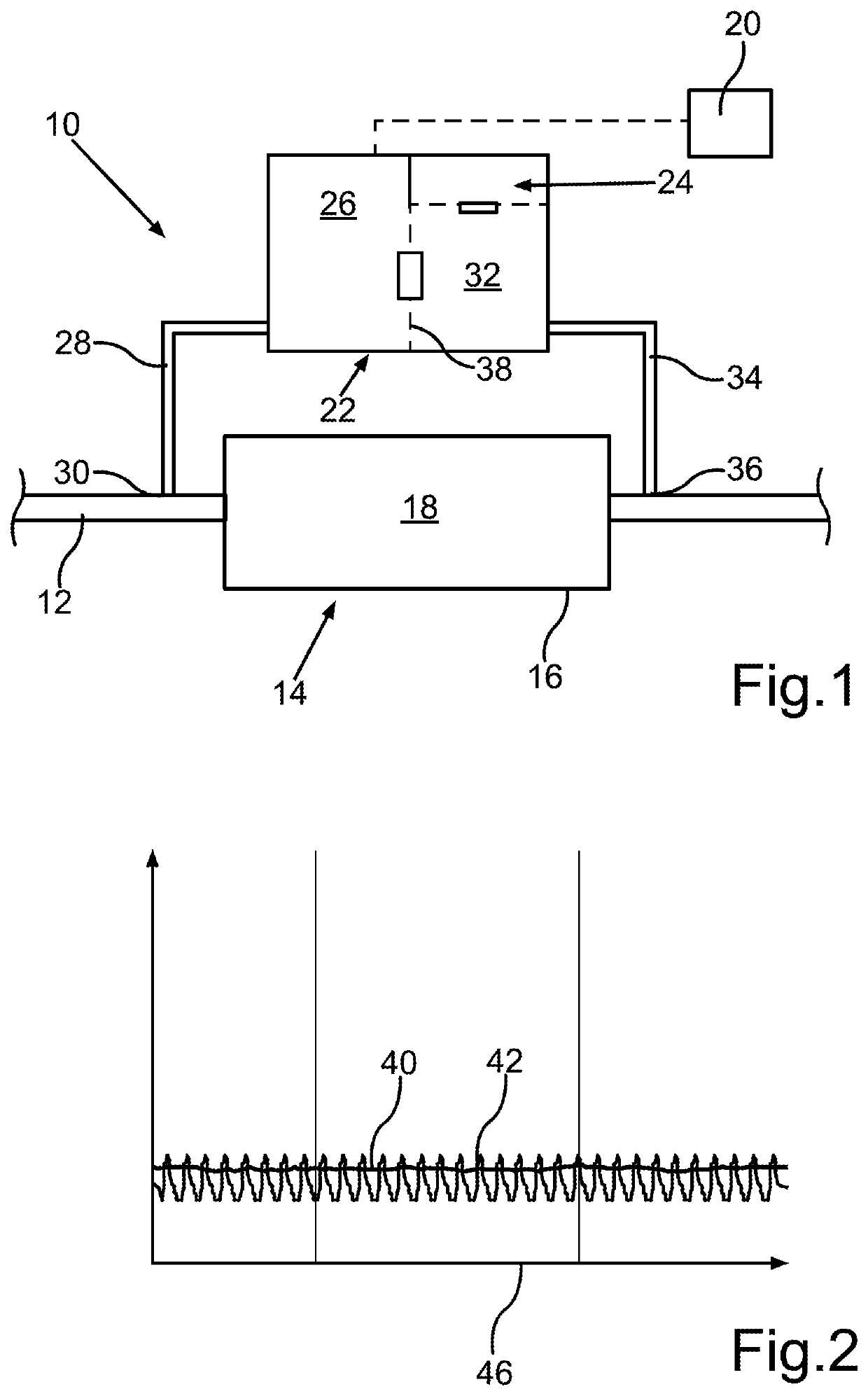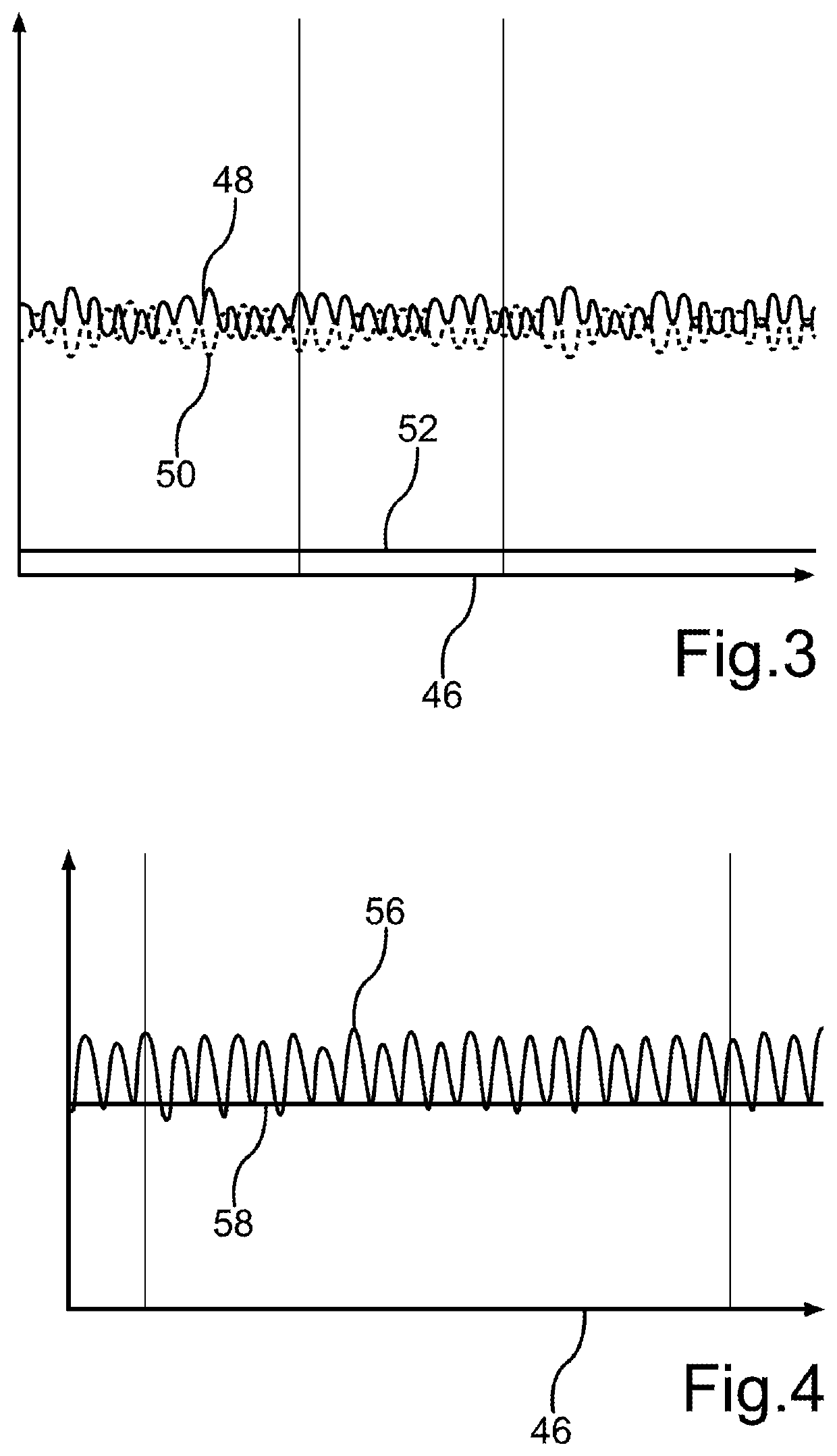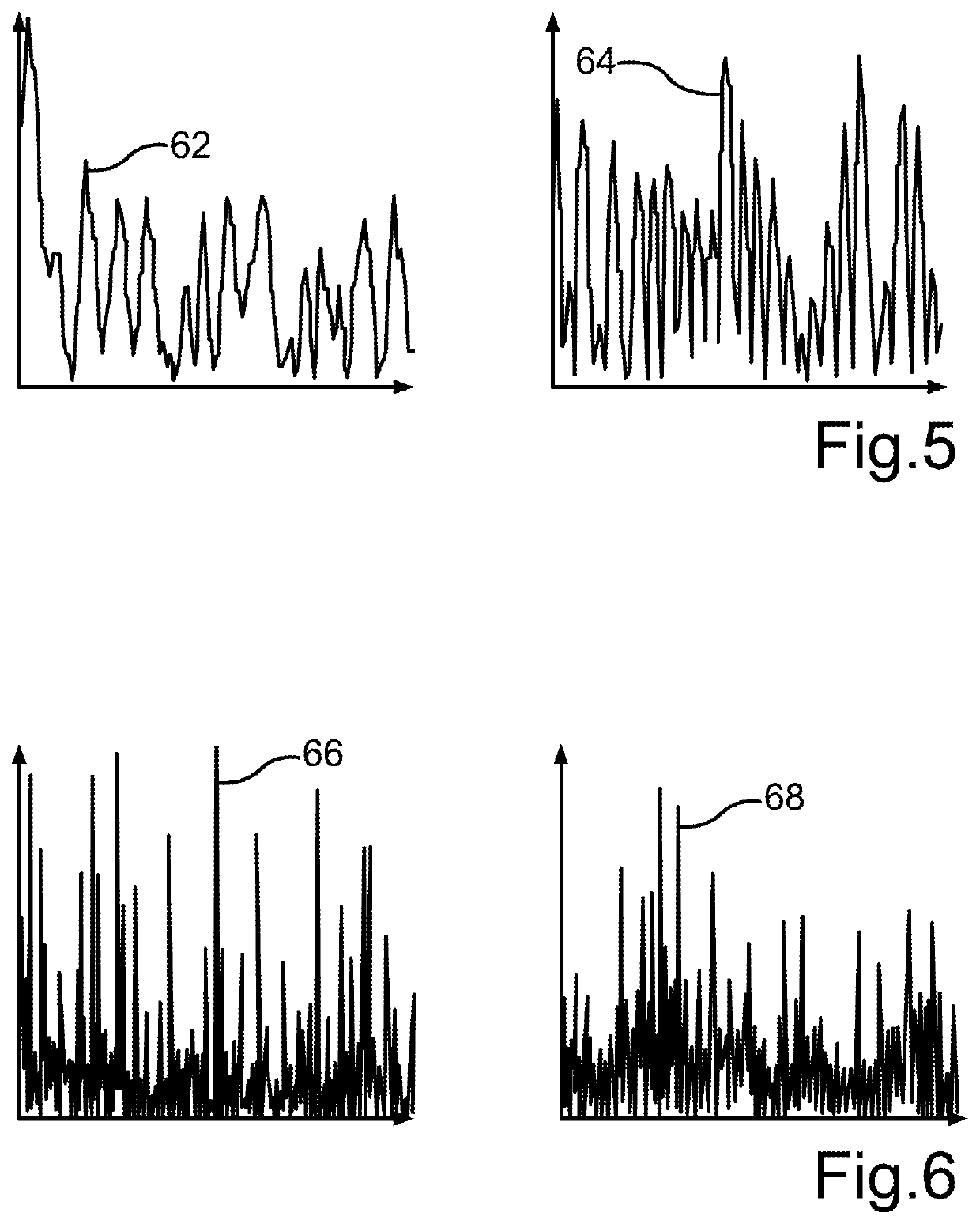Method for assessing a condition of a particulate filter and exhaust system for a motor vehicle
a technology of particulate filter and exhaust system, which is applied in the direction of machines/engines, mechanical equipment, separation processes, etc., can solve the problems of non-constant pressure on the input and output side of the particulate filter in the exhaust system, rarely or never achieved during normal driving, and the operation state of the internal combustion engine. , to achieve the effect of increasing the loading of the particulate filter, and reducing the load of the par
- Summary
- Abstract
- Description
- Claims
- Application Information
AI Technical Summary
Benefits of technology
Problems solved by technology
Method used
Image
Examples
Embodiment Construction
[0032]FIG. 1 shows a highly schematic representation of a section of an exhaust system 10 of a motor vehicle. The exhaust system 10 comprises an exhaust pipe 12, through which exhaust gas of an internal combustion engine (not shown) of the motor vehicle is guided to a particulate filter 14. The particulate filter 14 comprises a housing 16 and a filter device 18 arranged in the housing 16. The components of the exhaust system 10 shown in FIG. 1 are shown merely schematically and do not indicate the actual size proportions of the illustrated components relative to one another.
[0033]Presently, the condition of the particulate filter 14 is assessed by means of a control device 20, for example in the form of a controller. For this, readings are supplied to the control device 20, which are recorded by a differential pressure sensor 22 and a relative pressure sensor 24. A first chamber 26 of the differential pressure sensor 22 is fluidically connected to an input side of the particulate fi...
PUM
| Property | Measurement | Unit |
|---|---|---|
| differential pressure sensor | aaaaa | aaaaa |
| pressure | aaaaa | aaaaa |
| relative pressure sensor | aaaaa | aaaaa |
Abstract
Description
Claims
Application Information
 Login to View More
Login to View More - R&D
- Intellectual Property
- Life Sciences
- Materials
- Tech Scout
- Unparalleled Data Quality
- Higher Quality Content
- 60% Fewer Hallucinations
Browse by: Latest US Patents, China's latest patents, Technical Efficacy Thesaurus, Application Domain, Technology Topic, Popular Technical Reports.
© 2025 PatSnap. All rights reserved.Legal|Privacy policy|Modern Slavery Act Transparency Statement|Sitemap|About US| Contact US: help@patsnap.com



